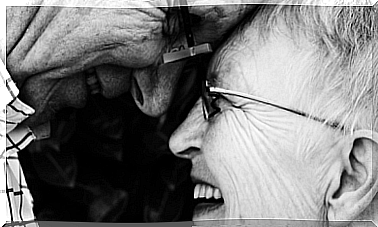The Soldier’s Syndrome: Post Traumatic Stress Disorder

In 1980, the term post-traumatic stress disorder (PTSD) was introduced. That’s the first time it was included in the American Psychiatric Association’s (DSM-III) diagnostic classification guide. Until then, the definitions and categories of the so-called “soldier syndrome” were not uniform.
During World War I, doctors called the stress-related illness soldiers experienced “shell shock.” In World War II, they called it “traumatic war neurosis.”
During the Vietnam War, the term went from “shell shock” to “post-Vietnam syndrome.” After the Vietnam War, social pressures forced the experts to redefine the concept. Then the term PTSD, or post-traumatic stress disorder, was coined.
Experts began to recognize it as a primary diagnostic appearance in the group of anxiety disorders. In this article we talk about PTSD as soldier syndrome to put it in a military context.

Definition and Origin of Soldier Syndrome or PTSD
Everyone experiences stressful or traumatic situations over the course of their life. When the stressful conditions are of a certain nature and intensity, they can cause a sudden and total imbalance in the mental structure.
At the same time, they block the individual’s adaptive and defensive skills. In other words, the situation overwhelms them in every aspect and they cannot respond adaptively. As a result, the traumatic stress arises.
The causes of soldier syndrome or PTSD are those experiences or environmental conditions that lead to mental trauma. PTSD develops as a result of exposure to traumatic stressors that seriously threaten the mental and physical integrity of the individual.
Also relevant is the subjective perception of fear of the individual and his personal inability to cope with this situation. Several factors determine whether or not a person develops PTSD, including the following:
- the intensity and severity of the trauma
- the degree of danger threatening the life of the person concerned, their physical and psychological health and their identity
- the level of exposure, implication, and proximity to the traumatic event
- the repetition of traumatic situations, weakening their resistance and adaptability until PTSD develops
- the type of trauma someone is exposed to
Symptoms
Depression, guilt, and anxiety are some of the most common symptoms of PTSD. The most characteristic symptoms of soldier syndrome can be divided into four categories, namely:
Intrusive memories: flashbacks and nightmares
It is very common to relive a traumatic event over and over again. The emotional and physical sensations can be just as real as the first time. Any daily event can trigger flashbacks, especially if they are related to the traumatic event.
Avoidant behavior
Constantly reliving the traumatic event is very distracting. People with PTSD tend to avoid people and places that remind them of what happened and avoid talking about it. One way to deal with pain is to simply deny your feelings and block everything to avoid suffering.
hypervigilance
People with PTSD/soldier syndrome are hyper-aware. They are also always on the defensive. They feel that they are in constant danger. This is known as hypervigilance.
Cognitive and behavioral changes and mood swings
People with PTSD often become very negative about everything around them and themselves. They feel guilty and are incapable of positive emotions or feelings. They can become aggressive or violent. They are also easily irritated, careless and reckless.
PTSD in the military
Certain military characteristics relate to and interfere with soldier syndrome or post-traumatic stress disorder. These elements also amplify the individual’s symptoms and can make clinical intervention difficult, such as:
- Military training. This kind of training forces them to be hyper-vigilant, which can be very dangerous if a PTSD patient becomes violent.
- Problems with authority. This can also make it difficult for them to accept changes in authorities or to accept someone who does not have what the soldier perceives as “appropriate”.
- Homecoming. When people in the military finally go home, they often feel a sense of abandonment, guilt and despair. They often feel that they no longer fit into their old life. They may feel guilty for having survived the war while some friends may not have.
- Strong memories of a fight. The memories of horrible situations they experience can haunt them.

Clinical Intervention
Treatment of PTSD in the military context is most effective when it starts immediately after the traumatic event. This helps reduce the anxiety and complications that can arise. For example, a common technique is “debriefing,” which helps to integrate and be aware of the traumatic events shared by a group.
Another important tool is psychoeducation, which helps to anticipate symptoms. Training psychotherapy is also a very positive means of preparing soldiers for what they might see in battle.
Finally, the most important thing about psychotherapy is that it adapts to the circumstances of each person. It can be done in a group or individual setting, although the former is very effective if the group is homogeneous.









